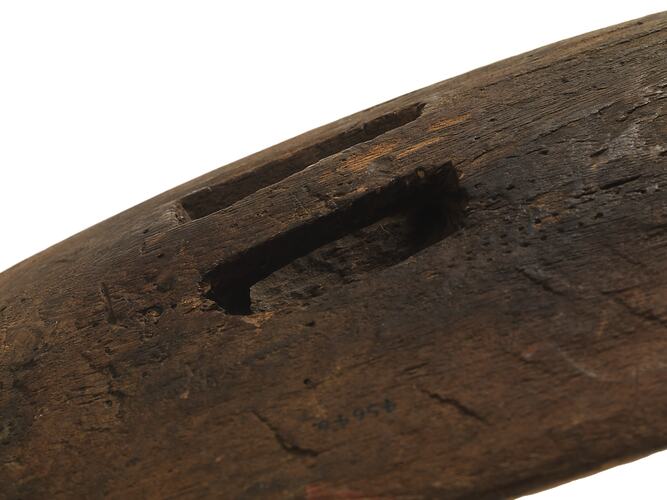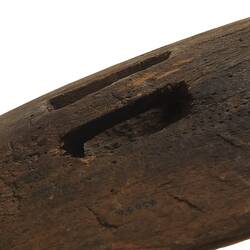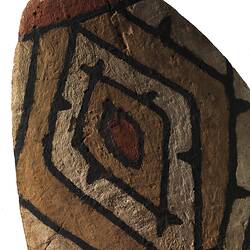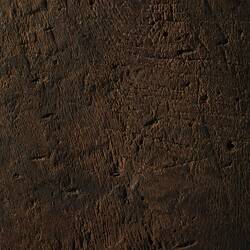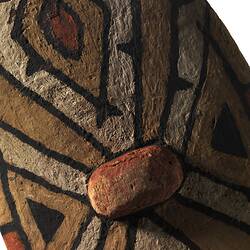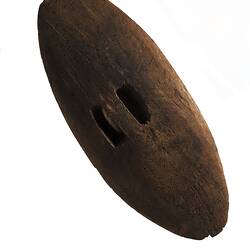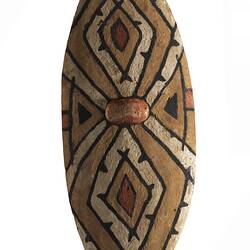Summary
Kidney-shaped shields made from the buttress roots of native fig trees are unique to the rainforest people of northeast Queensland. The colours and complex abstract patterns are totemic designs associated with marine life, animals, birds, insects, leaf patterns or astronomical observations. These shields were usually painted by two men working from either end and, depending on the detail required, pigments were applied with a stick frayed at the ends to form a brush or those made from hair or with the fingers. Pigments were ground into a powder with a pestle-type stone and mixed with a binding fluid. Each of the four language groups of the rainforest region had their own specific design elements - those around Tully generally used stripes and in the Cardwell region diamond patterns dominated. According to Walter Edmond Roth, the Chief Protector for Aborigines in Queensland, these shields were part of an indigenous trade network being part of the 'southern foreign trade' from the Mulgrave River.
These shields were highly sought by collectors and old shields that had been successfully used many times were particularly sought after. Botanists, ornithologists, ethnographers and photographers all ventured onto this northern frontier in the nineteenth century and acquired examples of these and the other distinctive objects made by rainforest peoples. From the 1870s the remote valleys behind Tully, Cairns and Mossman became a prime focus of mining and other ventures, and shields were collected in large numbers through to the following decade. However by the turn of the twentieth century, the trade with Europeans and the Indigenous trade network, which Roth noted was unlike that of 'the old days', had almost come to an end.
Local Name
Pi-kan or Balan bigin
Physical Description
An oval shield with pointed ends made of a single piece of softwood painted with natural pigments. The outer surface is painted with red ochre and abstract geometric patterning outlined in black and infilled with white, yellow and red. The handle is carved into the reverse side and at the same point on the outer surface is a raised rectangular section.
More Information
-
Object/Medium
Shield
-
Maker
-
Locality
-
Date Produced
-
Date Collected
-
Overall Dimensions
230 mm (Width), 70 mm (Depth), 530 mm (Height)
-
Classification
-
Date Made
-
Maker
-
Clan/Language Group
-
Place Made
-
Indigenous Region
-
Keywords
-
Type of item
-
Discipline
-
Category
-
Collecting Areas
Australian Indigenous - Northern Australia and Queensland and Torres Strait Islands
